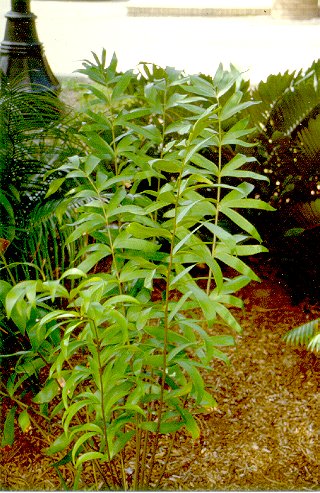 |
Ceratozamia hildae, from Mexico, is probably the best
cycad in this genus for landscape purposes. It prefers to be
in partial shade, but can grow in deep shade. If grown in full
sun, it will grow well but will get a little washed out looking.
During a freeze with a low of 14F, these plants were not damaged.
They react very well to fertilizer applications, and I have had
these mature as early as 41/2 years from seed. This is my favorite
cycad in my collection.
|
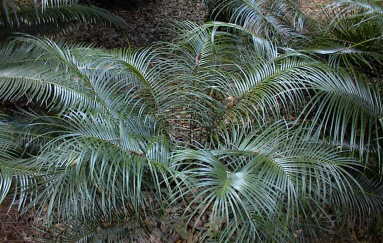 |
Ceratozamia kuesteriana, also from Mexico is another
good choice for our landscapes here in Florida. These plants
have a beautiful brown emergent leaf. They look their best in
partial shade, but can tolerate deep shade. In full sun they
can also look a little off color. The stems have shown to be
cold hardy to 17F. The leaves are very frost tolerant. The stems
are subterranean, so these plants can survive a freeze below
this temperature if the stem is covered. They attain a six foot
spread, and have a medium growth rate. This is one of only a
few cycads that have no spines, making them very landscape friendly. |
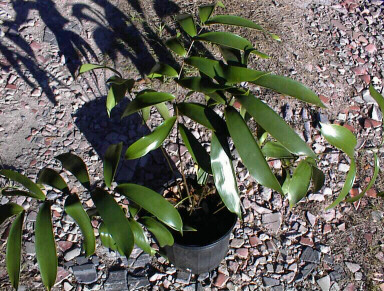 |
Ceratozamia latifolia is one of the best landscape plants
in this genus. It prefers to be in the shade to look it's best.
It has proven to be very cold and frost hardy. A freeze in Florida
of 14F did not even burn the leaves. It grows fairly fast and
reacts well to fertilizer applications.This plant will attain
a 7 foot spread. There are variations of this species, but this
plant has beautiful red emergent leaves. |
 |
Ceratozamia mexicana
This plant is known as the "true" mexicana. The
true mexicana has thin, green emergent leaves. Mexicana has proven
to be one of the most cold hardy of the Ceratozamias. It is very
rare in cultivation. This plant can attain a spread of 9 feet
over time. If you have what's called Mexicana robusta, this is
totally different. Mexicana can grow in the sun or in shade,
and reacts well to fertilizer applications. |
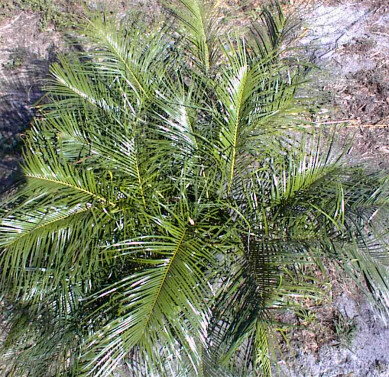 |
For now, this is Ceratozamia norstogii. Soon there will
be a new name for this plant. The plant known as the "plumose"form
of norstogii, will soon have the norstogii name all to itself.
This plant has red emergent leaves, and is moderately cold hardy.
If unprotected in any way, the foliage can be burned by frost.
I have seen trunk damage at 18F. The leaflets are thin, much
like C. kuesteriana. The leafstalks on this species have many
spines on them, where kuesteriana has none. This plant looks
best under some shade, so this will help protect it from frost
as well. C. norstogii will attain a 6 foot spread, but is rather
slow to grow. |
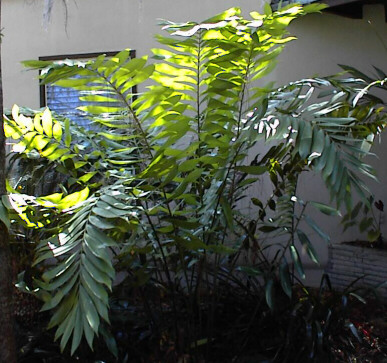 |
Ceratozamia miqueliana is a beautiful plant with very
wide leaflets. The new leaves are bluish in color with a redish
leafstalk. Miqueliana prefers to be in the shade, and should
not be concidered frost tolerant. Stems are mainly under ground,
so the plant can survive freezes in the low twenties. I have
found that these plants can grow quite fast if given enough fertilizer
and root room in the container. They can easily attain a spread
of 15 feet, or more. It is not common in cultivation, but attainable
from time to time. |
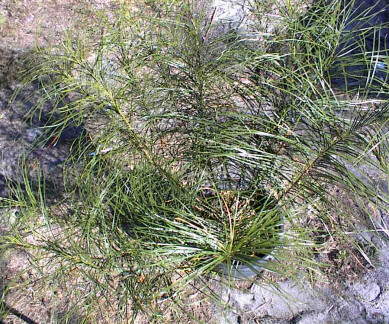 |
Ceratozamia "plumosa" is known today as the
plumose form of C. norstogii. It will be re-named soon. This
plant has reddish-purple emergent leaves and is very simular
with norstogii as far as leaflet width and spines. The interesting
difference with this one is that the leaves twist spirally. Notice
the leaf in the bottom of the picture. The leaflets are on different
planes. This plant also prefers shade, and is also not frost
hardy. Stems have been damaged at 18F. This plant is fairly slow
and does not react very much to fertilizer applications. This
plant can attain a 5 foot spread over time. |
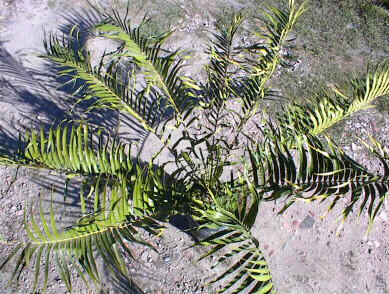 |
This is one of the robusta types called "Palma
Sola", because of it's habitat locality in Veracruz Mexico.
This has a green emergent leaf, and is very cold hardy. I had
slight leaf damage at 20F. "Palma Sola" can grow in
shade or sun, but looks a little better in some shade. It grows
moderately fast, and can attain a 12 foot spread. This also can
grow well with fertilizer applications and extra root room. |
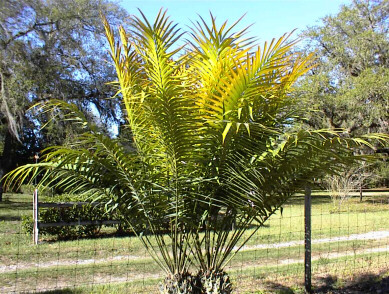 |
Ceratozamia "Santiago Tuxtla"
This is an upright growing form of robusta with reddish-brown
emergent leaves. Notice the new leaves still have the red color
on the ends. This individual is a double headed plant that was
grown from a seed with two embryos. Both sides were female. This
plant is not frost hardy, and stem damage can occur at temperatures
around 20F. "Santiago Tuxtla" grows better in partial
shade. This plant grows moderately, but can easily attain a 15
foot spread in time. |
 |
This is the little seen Ceratozamia sabatoi. According
to the description, the plant looks like a C. kuesteriana with
green emergent leaves. I have found that it has slightly wider
leaflets, and the leaflets are spaced wider apart than C. kuesteriana.
It has proven to be cold hardy, but I have not tested it for
frost tolerance becuase of its rarety. It also prefers to grow
in some shade. This plant grows a little slow and will have a
6 foot spread over time. |
